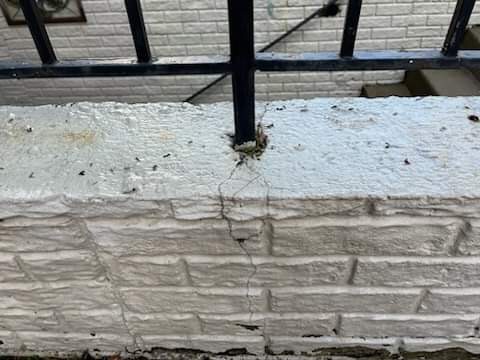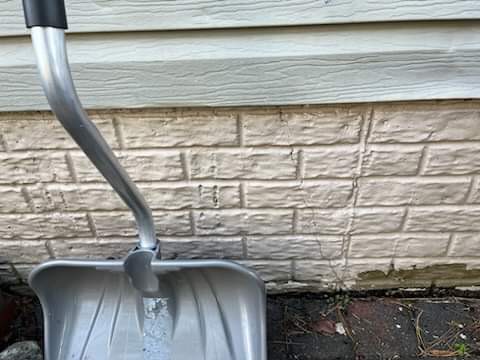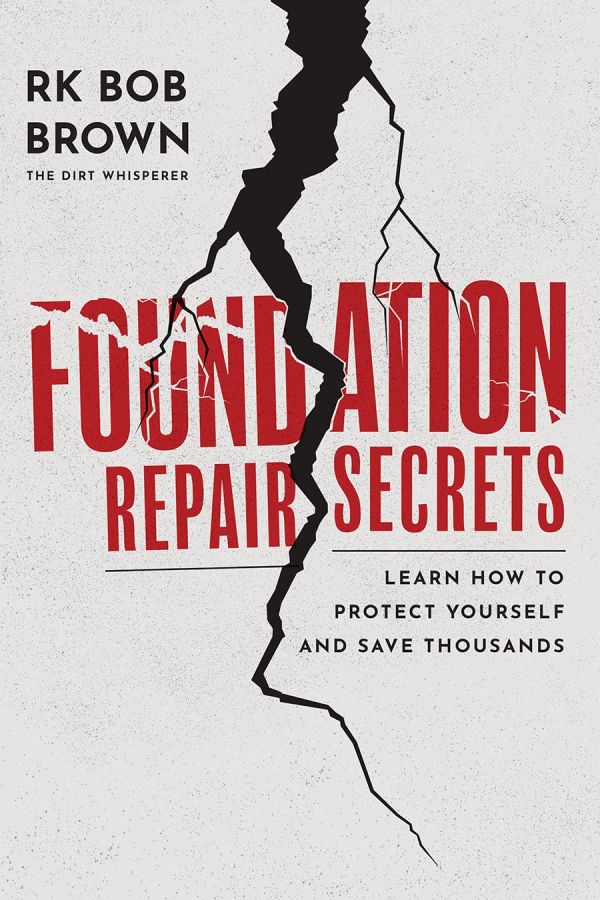
Seeing a crack in concrete can drive worry through the veins of homeowners who aren’t conversant in homeownership and residential construction. A crack also causes heightened concern in those of us who have spent most of our lives focused on home improvement. How do you know when there is just normal settling and when there’s a dire need to repair a foundation?
There are clues that trained experts use to delineate between a cosmetic issue and a structural problem. And then there is Bob Brown, an extreme expert who authored a helpful and detailed guide to understanding foundation issues called Foundation Repair Secrets. If you have a foundation worry, I recommend buying his book.
What causes foundation issues?
Foundation issues happen because the earth isn’t static. Rainwater, evaporation, vibrations, and other forces can affect the soil under and around a house. In an architect’s fantasy world, the house rides these changes uniformly, without any stress causing uneven movement. In the real world, a house is made of many parts that offer many connections and intersections, which are weaker points in the overall structure. It’s in those areas where common cracks and evidence of foundation issues show up. So, it’s not just a crack in the actual foundation that can be a clue to a foundation issue. Look out for corner cracks in rooms, baseboards cramming, or cupping of trusses.
And, there are two main causes of foundation issues: heave and settlement. Oftentimes, contractors are quick to diagnose most issues as settlement as the fix is pretty standard and, unfortunately, often expensive. Bob Brown says it’s easy to mix up the two, too. Trying to fix heave with settlement methods can just compound the problem into a more expensive and frustrating situation. And sometimes it’s cosmetic and nothing needs to be done, and other times it’s best to just stabilize soil movement to reduce further problems.
What are the secrets in Foundation Repair Secrets?
In the book, Bob Brown shares the basics about foundation repair with a helpful glossary of terms, and an explanation of how foundation repairs are usually conducted. He says that “mitigation costs to a homeowner can exceed the original cost of a home” and that “foundation, repair costs each year across the United States, are more than a combined damage from tornadoes or hurricanes, earthquakes and floods.”
Understanding the soil where your home is built is a helpful tool in the foundation investigation process, and Bob shares a helpful website from the U.S. Agriculture Department’s Natural Resources Conservation Service that details 95 percent of the soil in the U.S. He also shares resources for foundation performance association standards, which can be helpful to homeowners and pros to gain a deeper insight into addressing an issue.
Bob Brown also details his new method for repairing foundations that have saved homeowners money and time called MoistureLevel Smart Foundation System. It allows moist air to be expelled from under the foundation, which has historically been handled by removing and replacing the entire slab. Yes, a very expensive and inconvenient home repair. His method can work well with a variety of home designs, too.
Who should buy this book?
Anyone who is concerned about a foundation issue can benefit from reading Foundation Repair Secrets. It’s a part of home improvement that often is overlooked among homeowners as it doesn’t offer the same fun visuals as a new paint color or light fixture.
After reading the book, I better know how problems are misdiagnosed and why. And I know more about how to deal with a variety of foundation concerns, too. The honest and practical insights offered by Bob Brown in Foundation Repair Secrets is refreshing, especially within the building industry that traditionally, and heavily, relies on expensive product solutions.
Here’s a foundation question we received from a homeowner.
Question: I have a low wall that is part of my foundation/surrounds steps into my basement, with a railing on top. The railing has gotten loose and caused cracks to form in the foundation. Can this be fixed? If so, by who (suitable for DIY? or are there foundation specialists?)






What does Bob Brown think of this situation?
“The first picture is from the railing that is secured down into the concrete. It is rusting, and as it rusts, the iron oxide takes up more volume than the original iron even though it is weaker. As the iron oxide grows, it pushes on the concrete, cracking it, and the cracking will continue over time. It should be replaced with or sleeved with a nonferrous item. Depending on your skills it could be a DIY project, but getting the old one out could be difficult. You might end up damaging the wall and having to repair it or patch it up.
“The second shows that the crack is on an angle. That’s probably not from a rusting embedment, although I cannot see the top of it to confirm that. It does not look serious. Concrete cracks for a lot of reasons and most of it is harmless.”
About the Author




